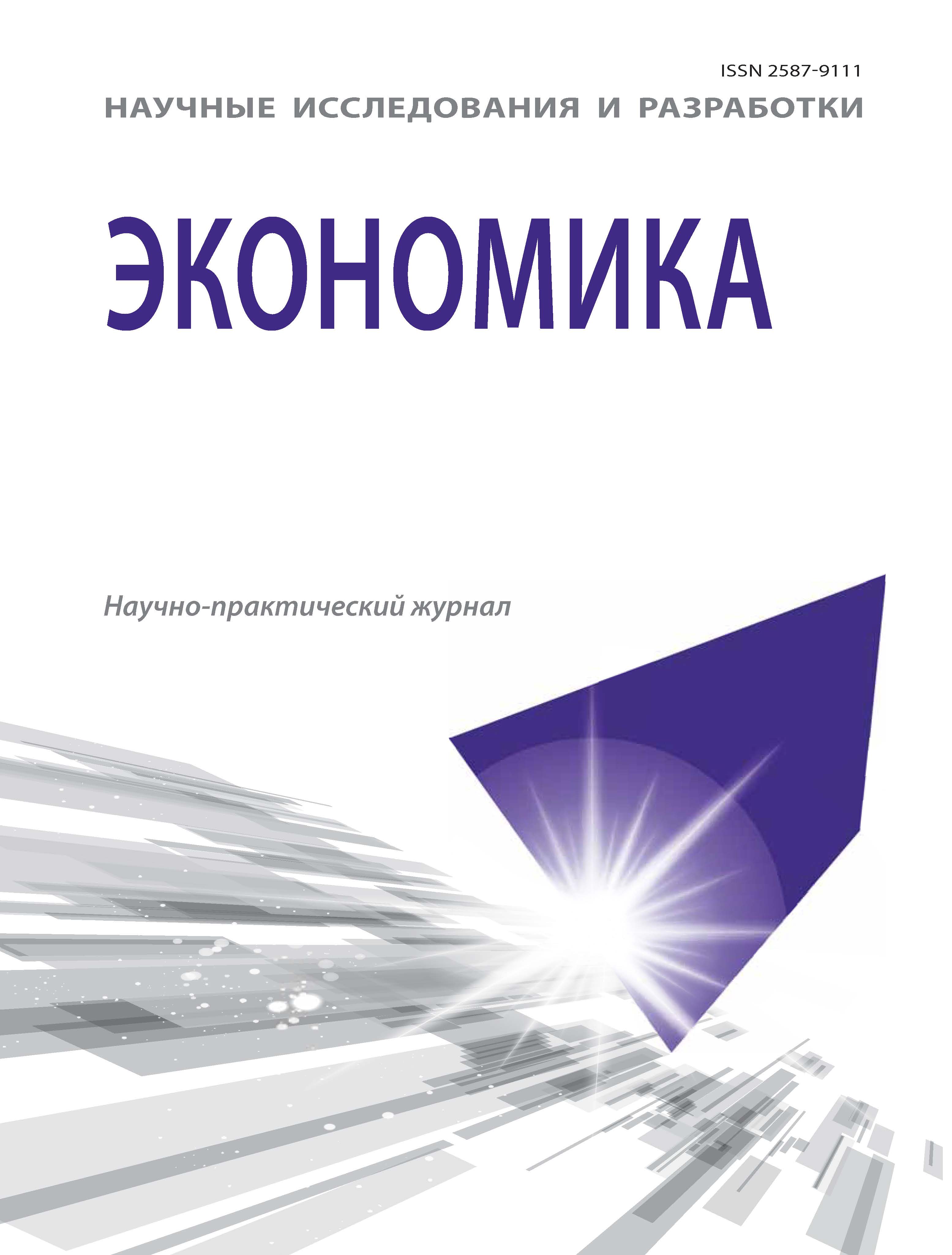Tula, Tula, Russian Federation
Tula, Tula, Russian Federation
Econometric evaluation of economic growth sustainability of various regions is provided. As it is stated, for the period of 1998–2012 economies of the North Caucasian and the Far Eastern federal districts tended to develop more sustainably, while economies of the Central and the Urals federal districts tended to develop less sustainably. Within the North Caucasian federal region, it was the Kabardino-Balkar Republic, that showed the most sustainable economic growth. Similarly, during the same period the Republic of Sakha (Yakutia) within the Far East federal district, the Krasnoyarsk Region within the Siberian federal district, the Leningrad Region within the North-West federal district and the Republic of Adygea within the Southern federal district were leaders in terms of sustainable development within their federal districts. As for the Volga federal district, the most sustainable economic growth was observed in the Republic of Bashkortostan; within the Urals federal district the most sustainable growth was observed in the Sverdlovsk Region and within the Central federal district — in Belgorod Region. The need to differentiate anti-crisis economic policy towards separate regions, dependant on the propensity of a regional economic system for sustainable economic growth, is emphasized.
stability, economic growth, regions, econometric models, recession.
Устойчивость экономического развития регионов страны рассматривается во многих работах [1–9]. Устойчивость экономического развития оценивается на основе экспертных оценок, или на основе агрегированных финансовых показателей [1, 2, 4–9]. В некоторых работах предлагается оценивать устойчивость развития экономики регионов как сложных систем [3].
Развитие мировой, национальных и региональных экономических систем характеризуется устойчивым в долгосрочных периодах экономическим ростом [10]. В краткосрочных периодах, в отдельных странах, регионах экономический рост может быть неустойчив, сменяться стагнацией или спадом. Л. Притчетт исследовал экономическую динамику стран и установил, что существует большое количество типов экономического развития, различающихся характером экономической динамики [11]. Он установил неустойчивость траекторий развития, которые могут приводить «богатые» страны к бедности, «бедные» страны — к богатству, а переход от одного типа экономического развития страны к другому есть результат проявления неустойчивости.
В последние годы опубликовано множество работ, в которых мировая и национальная экономика рассматриваются на основе современной теории сложных систем [12–16]. В этих работах показаны возможности оценки устойчивости и неустойчивости развития. Т. Постон и И. Стюарт описывают изменение характера развития сложных систем [15]. Они объясняют, что изменение развития систем сопровождается потерей устойчивости, а потеря устойчивости может быть выявлена методами теории катастроф. Признаком неустойчивости может служить «флаг» катастрофы — аномально большая дисперсия показателей, отражающих функционирование системы.
1. Vasenko V.E. Determining the level of development of the region based on the methodology for assessing sustainable development. Regionalnaya ekonomika: teoriya i praktika [Regional Economy: Theory and Practice], 2013, I. 1, pp. 21-28. (in Russian)
2. Mukhametova D.D. Evaluation of the sustainability of economic development in the region. Ekonomika i upravlenie: nauchno-prakticheskiy zhurnal [Economy and Management: Scientific Journal], 2013, I. 3 (113), pp. 75-79. (in Russian)
3. Bystray G.P., Lykov I.A., Nikulin N.L. Risk assessment and prediction of long time series of economic indicators. Ekonomika regiona [The region’s economy], 2012, I. 3, pp. 240-249. (in Russian)
4. Busygina N.A. Economic sustainability: a regional perspective, the problems and their solutions. Ekonomika i upravlenie: analiz tendenciy i perspektiv razvitiya [Economy and Management: Analysis of trends and prospects], 2012, I. 1, pp. 158-164. (in Russian)
5. Komarova V.V. Improving the assessment of the functioning of the economy of the region. Vestnik tambovskogo universiteta. Seriya: gumanitarnye nauki [Journal Tambov University. Series: Humanities], 2012, I. 11 (115), pp. 74-76. (in Russian)
6. Zolotukhina A.V. Franz M.V. An assessment and predictive model of scientific and technical potential of the region. Ekonomika regiona [The region’s economy], 2012, I. 1, pp. 211-221. (in Russian)
7. Loktev A.V., Menshchikova V.I. Sustainable economic development of the region: the basic conditions and a mechanism to. Socialno-ekonomicheskie yavleniya i protsessy [Socioeconomic phenomena and processes], 2012, I. 10 (044), pp. 115-122. (in Russian)
8. Gorlanova A.E. Sustainable development of the region and methods of implementation of regional economic policy. Ekonomika ustoychivogo razvitiya [Economics of Sustainable Development], 2011, I. 5, pp. 18-21. (in Russian)
9. Tsomartova L.V. Sustainable economic development of the region: diagnosis and assessment. Vestnik vladikavkazskogo nauchnogo tsentra [Herald of Vladikavkaz Scientific Centre], 2011, V. 11, I. 1, pp. 47-52.
10. Basovskaya E.N., Basovskiy L.E. Ekonomicheskaya teoriya [Economics]. Moscow, INFRA-M Publ., 2000. 375 p.
11. Pritchett L. Understanding Patterns of Economic Growth. The World Bank Economic Review, 2000, V. 14, I. 2, pp. 221-250.
12. Jakimowicz A. Catastrophes and Chaos in Business Cycle Theory. ACTA PHYSICA POLONICA A. 2010, V. 117, I. 4, pp. 640-646.
13. Accinelli Elvio, Anyul Martin P. Can Catastrophe Theory Become a New Tool in Understanding Singular Economies? New Tools of Economic Dynamics. Lecture Notes in Economics and Mathematical Systems. Springer Berlin Heidelberg. 2005, V. 551, pp. 95-109.
14. Rosser J., Barkley Jr. Aspects of dialectics and non-linear Dynamics. Cambridge Journal of Economics. 2000, I. 24, pp. 311-324.
15. Poston T., Stewart I. Catastrophe Theory and Its Applications. Dover Publications, 2012. 584 p.
16. Gilmore R. Catastrophe Theory for Scientists and Engineers. Courier Dover Publications, 1993. 666 p.
17. Basovskiy L.E. Istoriya i metodologiya ekonomicheskoy nauki [History and methodology of economics]. Moscow, INFRA-M Publ., 2011, 231 p.
18. Basovskaya E.N., Basovskiy L.E. Turning points of economic development in Russia. Ekonomika [Economics]. 2013, V. 1, I. 1, pp. 4-9. (in Russian) DOI:https://doi.org/10.12737/430.
19. Basovskiy L.E. Turning points in world economic development. Ekonomika [Economics]. 2013. V. 1, I. 3, pp. 9-14. (in Russian) DOI:https://doi.org/10.12737/686.
20. Basovskiy L.E. Turning points of economic development of countries in South America. Ekonomika [Economics]. 2013. V. 1, I. 4, pp. 11-14. (in Russian) DOI:https://doi.org/10.12737/1471.
21. Basovskiy L.E., Basovskaya E.N. Sustainable economic development of the countries of Southeast Asia. Ekonomika [Economics]. 2013. V. 1, I. 5, pp. 3-9. (in Russian) DOI:https://doi.org/10.12737/1732.






